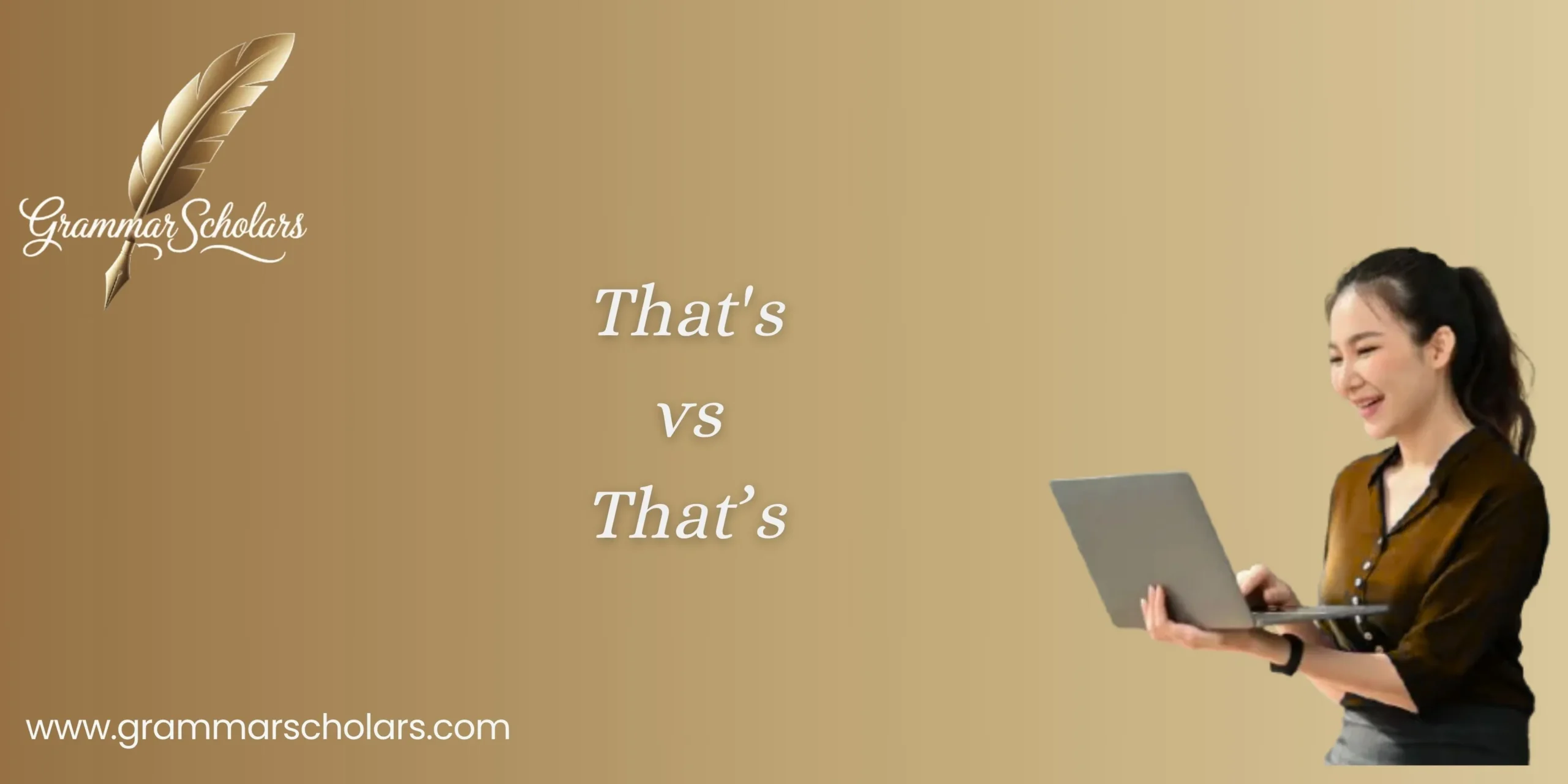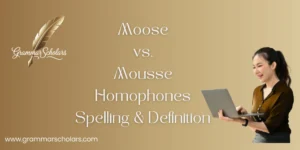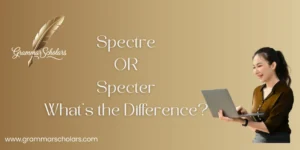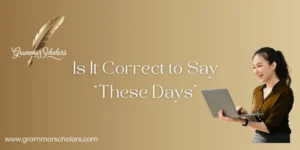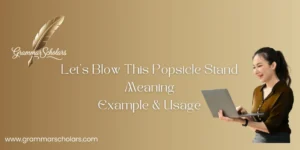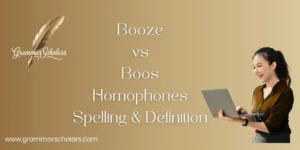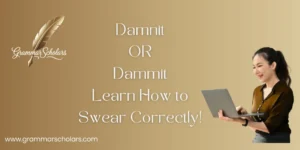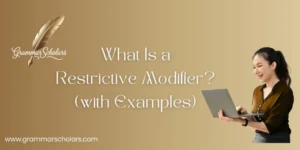Writing or typing mistakes happen fast, and one simple error, like mixing up “that’s” vs “that’s”, can drastically change the meaning of a sentence. I’ve watched students lose marks over this tiny punctuation slip because they didn’t know the correct usage. Though the words look nearly identical, they’re used differently in grammar, and getting them wrong can affect the clarity of your communication. It’s a common mistake that many people make, especially when they’re confusing contractions in casual texts or academic work.
This comprehensive guide helped me break down everything learners need to avoid such errors.
I often walk them through practical examples and real-life scenarios to ensure they never repeat the same typo. Even minor mistakes like this can impact how your message is understood, so knowing the difference makes you a more effective writer. Simply put, writing with clarity starts with understanding even the smallest grammar rules.
What’s the Difference Between “That’s” and “Thats”?
At first glance, it might seem like “that’s” and “that’s” are just two versions of the same thing. However, there’s a crucial difference in how they’re used in the English language. Here’s what you need to know:
That’s: The Contraction
“That’s” is a contraction of two words: “that” and “is” or “that” and “has.” Contractions are widely used in spoken and informal written language because they make communication faster and more fluid.
Examples:
- “That’s my book.” (That is my book.)
- “That’s been a great day.” (That has been a great day.)
It’s important to remember that “that’s” is always followed by an action or a state, depending on whether it’s standing in for “is” or “has.”
That’s: A Typo
That’s” is simply an incorrect form. It’s a typo that often happens when people type too quickly or aren’t paying attention. The apostrophe in “that’s” is there to indicate possession or a contraction, so without it, the word becomes grammatically incorrect.
Common Example of Mistake:
- That’s a great idea.” ❌
- Correct form: “That’s a great idea.” ✅
Proper Usage of “That’s”: Two Common Meanings
To truly understand when to use “that’s,” let’s break it down into the two most common meanings: “That is” and “That has.”
When “That’s” Means “That Is”
One of the most common uses of “that’s” is when it’s acting as a contraction for “that is.” This is used to provide more information about something that has already been mentioned or to emphasize something.
Example Sentences:
- “That’s my favorite movie.”
(That is my favorite movie.) - “That’s what I was trying to tell you.”
(That is what I was trying to tell you.)
In these sentences, “that’s” stands for “that is” and helps to clarify the subject. It’s a clean and efficient way to shorten the sentence without losing any meaning.
When “That’s” Means “That Has”
The second usage of “that’s” is when it replaces “that has.” This form is used less frequently than “that is,” but it still pops up often enough to be important.
Example Sentences:
- “That’s been a long day.”
(That has been a long day.) - “That’s already been decided.”
(That has already been decided.)
In these cases, “that’s” is referring to something that has happened in the past, indicating a completed action or state.
When and Why “That’s” Is Incorrect
Despite the common mistakes, understanding why “that’s” is incorrect can help you avoid it in your writing.
Why That’s” Violates Grammar Rules
The absence of an apostrophe in “that’s” makes it grammatically incorrect. The apostrophe in “that’s” is crucial because it represents a contraction of two words (either “that is” or “that has”). Without it, you lose that clarity, which can make your writing look unprofessional.
Example of the Mistake:
- “That’s the book I was talking about.” ❌
- Correct form: “That’s the book I was talking about.” ✅
As simple as it sounds, getting this wrong can confuse the reader, leading them to question your writing skills.
Causes of the Mistake
- Autocorrect issues: Autocorrect on many phones or word processors might not catch “that’s” as a mistake.
- Typing too quickly: When you’re typing fast, it’s easy to miss the apostrophe.
- Misunderstanding contractions: Sometimes, people forget that contractions require an apostrophe to signal a shortened form of two words.
Understanding the root causes of the error can help you prevent it from happening.
Exceptions: When “That’s” Is Technically Allowed
Though “that’s” is generally a mistake, there are exceptions when it might appear in correct contexts, though these are rare.
Proper Nouns and Branding
In some cases, you’ll encounter “That’s” in product names, titles, or creative works. In these cases, the lack of an apostrophe is intentional.
Examples:
- Honda That’s: A car model by Honda, used as a brand name.
- That’s It!: A product name for a healthy snack brand.
In these cases, “That’s” is part of the brand or product title and does not adhere to normal grammar rules. However, outside of these contexts, it’s still incorrect to use that’s.”
Why Using “That’s” Correctly Actually Matters
Understanding and using “that’s” correctly is more than just following grammar rules. It plays a significant role in professional writing, academic contexts, and even in everyday communication.
Professional Writing
In professional settings, such as emails, reports, and proposals, using the correct form of “that’s” can make a huge difference. Even small mistakes can undermine your credibility. Imagine reading a business report where “thats” is used instead of “that’s.” It immediately gives off the impression of carelessness or lack of attention to detail.
Clarity in Communication
Effective communication is all about clarity. When you use “that’s” correctly, your message is clear, concise, and easy to follow. Misusing contractions like “that’s” can lead to confusion and diminish the clarity of your message, especially in formal writing.
Comparison Table: “That’s” vs “Thats” at a Glance
Here’s a quick comparison table to help you visualize the difference and proper usage of “that’s” and “that’s.”
| Expression | Type | Correct? | Meaning | Example |
| That’s | Contraction | ✅ | That is / That has | “That’s my favorite book.” |
| Thats | Typo | ❌ | Not a real word (usually) | “That’s not my problem.” ❌ |
| Honda That’s | Proper noun | ✅ | Brand name | “I drive a Honda. a That’s.” |
Frequently Confused Homophones & Similar Grammar Issues
Confusing homophones and similar-sounding words can also trip up writers. Here are some common grammar issues related to “that’s”:
Hear vs. Here
- Hear: To perceive sound through the ears.
- Example: “I can’t hear you.”
- Here refers to a location.
- Example: “I am here.”
Quicker vs. More Quickly
- Quicker is an adjective.
- Example: “She’s a quicker runner than I am.”
- More quickly is an adverb.
- Example: “She ran more quickly than I did.”
Catalog vs. Catalogue
- Catalog (American English) vs. Catalogue (British English).
- Example: “I’m looking for the catalog of products.”
- Example (British): “He ordered a catalogue of all the books.”
Walk vs. Wok
- Walk: To move on foot.
- Example: “Let’s take a walk in the park.”
- Wok: A Chinese cooking pan.
- Example: “I’m making stir fry in the wok.”
But vs. Butt
- But: A conjunction used to introduce a contrast.
- Example: “I want to go, but I’m too tired.”
- Butt: Refers to the backside.
- Example: “He slipped and landed on his butt.”
Exploitive vs. Exploitative
- Exploitative: Taking advantage of others in an unethical way.
- Example: “The exploitative practices of the company were revealed.”
- Exploitative: More commonly used to describe actions that unfairly take advantage of others.
- Example: “The exploitative behavior of the employer led to public outrage.”
How to Avoid the “That’s” Mistake: Quick Fixes & Writing Tips
Now that you understand the importance of using “that’s” correctly, here are some practical tips to help you avoid the “that’s” mistake.
Grammar Check Tools
Use grammar-checking tools like Grammarly or Hemingway Editor to catch any contraction mistakes. These tools will underline typos and offer quick fixes.
Slow Down While Typing
When typing quickly, it’s easy to forget the apostrophe. Make a habit of slowing down, especially when you’re typing contractions.
Spell It Out When Unsure
If you’re unsure whether to use “that’s,” consider spelling out “that is” or “that has” instead. It’ll remove any ambiguity and ensure correctness.
Use Autocorrect with Caution
While autocorrect can help with many spelling errors, it can also lead to mistakes when it changes contractions improperly. Always double-check your writing.
Final Thoughts
In conclusion, the distinction between “that’s” vs “that’s” may seem small, but it’s significant enough to affect the clarity and professionalism of your writing. While “that’s” is a simple contraction of “that is” or “that has,” that’s” is an incorrect form and should be avoided in all standard writing. Mastering the use of contractions like “that’s” can make your communication clearer, more concise, and ultimately more effective.
To avoid common mistakes, always remember to double-check your writing for these small but important details. A grammar check tool, slowing down while typing, and ensuring proper use of apostrophes will help you avoid confusion and ensure that your writing looks polished and professional. By taking these simple steps, you’ll elevate your written communication and ensure that your work is taken seriously, whether it’s a casual email or a professional report.
FAQs
Is it ever okay to usethat’sts” in writing?
No, “that’s” without the apostrophe is always a mistake. It’s a typo and should be corrected to “that’s” to ensure proper grammar. The apostrophe is necessary because it represents the contraction of “that is” or “that has.”
How can I avoid making the “that’s” mistake in my writing?
To avoid the “that’s” mistake, use grammar-checking tools like Grammarly or Hemingway Editor. These tools highlight errors and suggest corrections. Additionally, double-check your contractions to ensure they are written correctly. Taking a little extra time to proofread and slow down when typing can help you catch this common error.
Can “that’s” ever be used correctly in any context?
While “that’s” is incorrect in standard grammar, it can appear in specific brand names or creative titles. For example, “Honda That’s” could be a brand name, and “That’s It!” might be a product name. However, outside of these exceptions, “that’s” should never be used in formal writing.
Why does “that’s” require an apostrophe?
The apostrophe in “that’s” signifies a contraction, where “that” stands for either “that is” or “that has.” The apostrophe replaces the missing letters, and without it, the word becomes grammatically incorrect.
What’s the difference between That’s vs That’s?
“That’s” is a contraction of “that is” or “that has,” used to shorten sentences and make them more fluid. For example, “That’s my book” means “That is my book.” On the other hand, “that” can function as a demonstrative pronoun or conjunction, but it is not a contraction. For example, “That is the book” (without the contraction).
